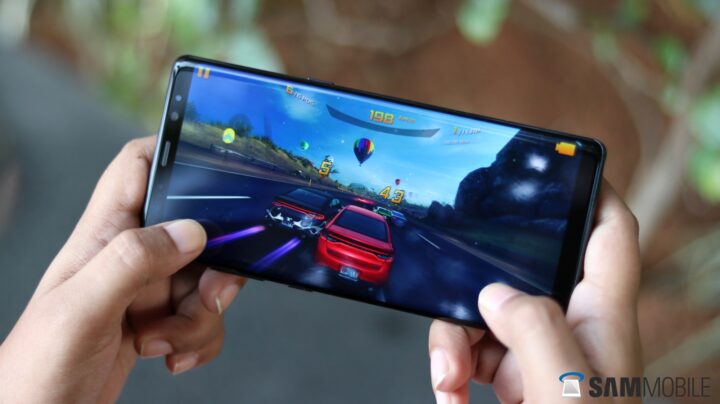Samsung's lead in smartphone display technology is ever widening
Final updated: October 3rd, 2017 at 15:09 UTC+01:00
Although Nokia was the get-go brand that launched a mobile phone with an AMOLED screen (the Nokia N85), information technology was Samsung that popularized the technology by using it consistently on its phones and bringing it to more than and more price points with each passing twelvemonth. The Nokia N85 was launched in August 2008, and the Samsung i7710 followed in October in the same year, with both of them featuring a similarly-sized screen and resolution. Both Nokia and Samsung connected releasing phones with AMOLED screens. Other brands, including HTC and LG, as well started using OLED engineering in their phones over the years.
While OLED screen technology offered great dissimilarity, wide viewing angles, and thin panels, information technology came with a few caveats. First and foremost, the panels weren't bright enough, and they suffered from something called 'screen burn-in'. Moreover, the colour reproduction was far from accurate and power efficiency went for a toss while displaying whites. Information technology took a few years for OLED panel makers to iron out these issues, and Samsung was at the forefront of solving them. The brightness levels went from around 400 nits on the Milky way S to more than 600 nits on the Galaxy S5 and over 1,200 nits on the Milky way Note 8. Samsung didn't merely stop at that place. It introduced the Galaxy Note Border as the first phone with a curved border screen, which was then introduced and improved on with the Galaxy S6 and Galaxy S7, ultimately ending upwardly every bit the beautiful Infinity Display we see on the Galaxy S8 and Note eight.

DisplayMate, a screen testing and calibration equipment manufacturer, tested all the recent flagship phones from Samsung and noted that the colour accuracy was brilliant and has consistently rated the company's AMOLED displays as the best in the industry. AU Optronics, BOE Display, Everdisplay, Foxconn, JDI, Sharp, Truly, and Visionox are some of the new brands that take started manufacturing OLED screens. However, Samsung'southward OLED panels for mobile devices are considered the best in the world, thanks to the time and research the company has invested over the years. LG is the company's closest competitor and it recently launched its flagship phone, the V30, with a bezel-less P-OLED screen, but it is far from perfect.
Now, nine years after Samsung'southward first OLED telephone, Apple has jumped onto the OLED bandwagon. The iPhone X is Apple's first telephone with an OLED screen and minimal bezels (although the Cupertino behemothic has managed to ruin symmetry by going overboard with the no-bezel theme). Apple is known to source parts from nothing but the best, and it has turned to Samsung for a reason. The newest-generation OLED panels from Samsung have slap-up color accuracy, can go extremely bright, and cover a broad variety of colour spaces. Screen burn-in has too been greatly reduced, and power efficiency has but increased with each passing year.

It's taken a few years to go hither, but in that location's no question that Samsung's persistence has paid off in ways beneficial to both the company and its consumers. And, while Samsung'south position in the OLED display segment remains unchallenged, it isn't resting on its accolade. Nosotros see the company make noticeable improvements to its flagship phone displays every half dozen months, and it's even planning to launch a foldable phone next year. Making a phone with a foldable screen would be no like shooting fish in a barrel task, but should Samsung manage to do it satisfactorily, it would be close to impossible for other brands to imitate. Apple tree is finally making a phone with an OLED display, only it will probably meet its chief competitor alter the game with its foldable phone earlier the second OLED-equipped iPhone makes it to market place.
What I'thousand getting to with this article is that Samsung's lead in smartphone display technology is unmatched, and the company shows no signs of stopping in its relentless pursuit to perfect the viewing experience on mobile devices. Galaxy flagships offer tons of features that make them impressive, but those stunning displays up front are what continue to attract millions of consumers. Information technology'due south something to be proud of for every Samsung fan, and nosotros can't await to see what the Korean behemothic will bring to the table next twelvemonth.
Source: https://www.sammobile.com/2017/10/03/samsungs-lead-smartphone-display-technology-ever-widening/
Posted by: simsdestoo.blogspot.com


0 Response to "Samsung's lead in smartphone display technology is ever widening"
Post a Comment